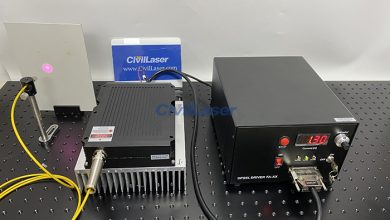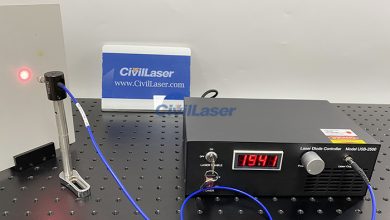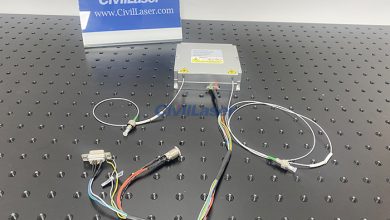Laser News
2019 Status of Fiber Laser Industry — Beginning in the Soviet Union, Prospering in China
This is the story of an industry, but to say a simple scientific knowledge.
Laser is one of the major technological inventions of the 20th century. In 1964, Qian Xuesen suggested that the Chinese name be “laser.” The scientific principle of laser “stimulated radiation” was proposed by Einstein in 1917. In fact, it is quite simple, and high school physics knowledge can be understood.
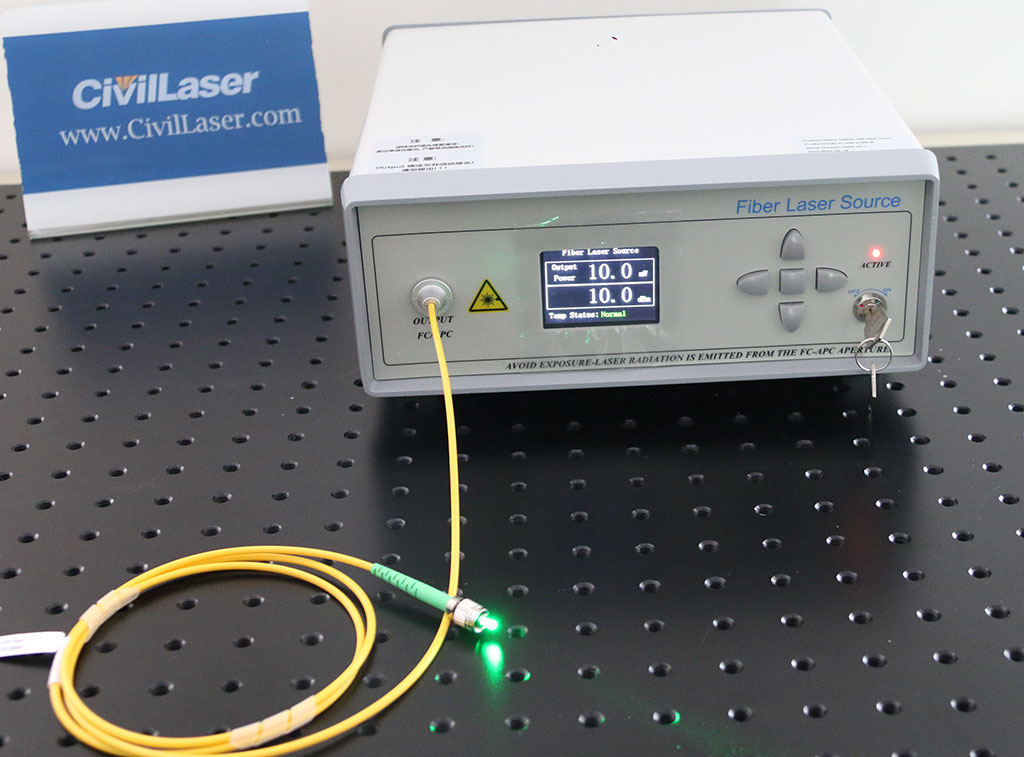
Einstein pointed out that particles with high energy level E2, when photons with frequency V=(E2-E1)/h are incident (h is Planck’s constant), the particles will quickly transition from energy level E2 with a certain probability. To the energy level E1, at the same time radiating a photon with the same external photon frequency, phase, polarization state and propagation direction, this is called stimulated radiation.
Seeing that it is amazing? One photon changes to the other, and the two photons will dry up? That’s right, the two went to find other particles and became four. This process is like a nuclear explosion chain reaction, the number of photons increases rapidly, which is equivalent to the original optical signal being amplified. “Laser” is actually the abbreviation of Light Amplification by Stimulated Emission of Radiation.
This is another theoretical result of the Nobel Prize level proposed by Einstein, but it was not until 1960, five years after his death, that the laser was made. Why is it so long? Because of the “stimulated absorption” proposed in Einstein’s paper. The photon may hit the particle of the E1 level, turn it into the E2 level, and disappear itself. The so-called chain reaction is gone.
In general, the material is stimulated to absorb more particles than the stimulated radiation (lower energy level E1 than the high energy level E2), so the light passing intensity will not be amplified but will decrease. To generate a laser, the key condition is “reverse number of particles”, with more high-level particles than low-level particles. But this is actually not that difficult. Looking back at the 1930s physicists have the ability to make it.
One year after the United States made the laser in 1960, China immediately led the academician Wang Dazhao to make China’s first laser in 1961 (Wang Lao died in 2011 and was just selected as one of the 100 reform pioneers). It was only in the 1930s that scientists did not integrate optical theory and technology, and did not expect to do it. There were many other major discoveries. This made the laser’s invention process somewhat bizarre, and the “Maser” (microwave amplifier) was first made out before the “Laser” was made.
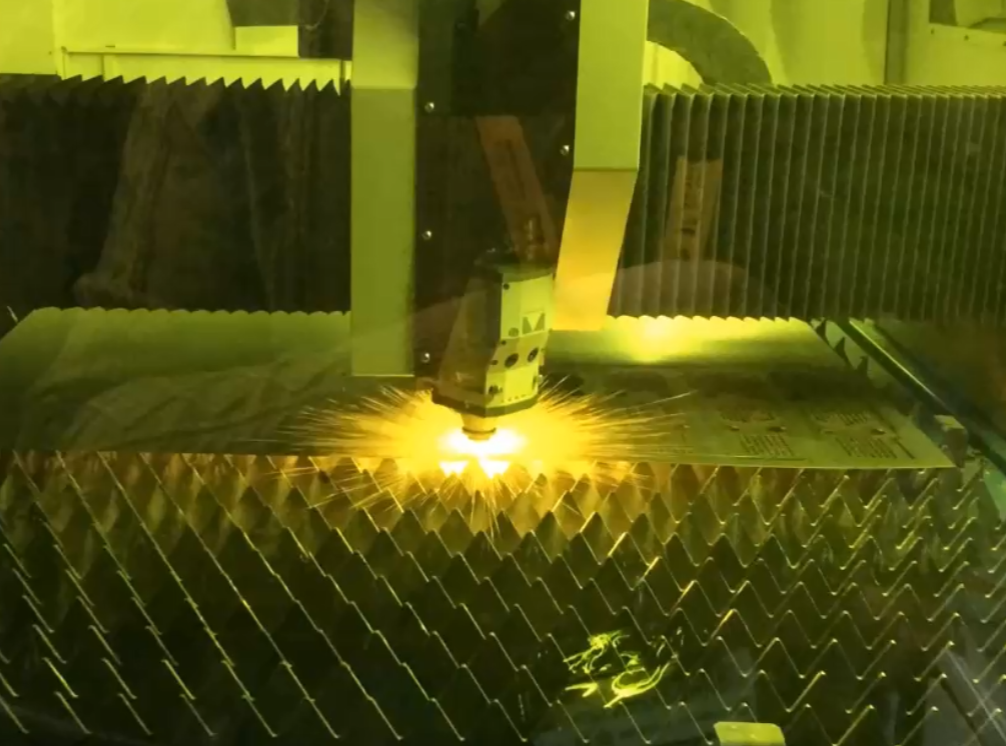
Charles Towns, a physicist at Columbia University in the United States, had a radar in World War II. After the war, the US Navy wanted to make a powerful beam, and Towns took over the task. In 1954, Towns finally made Maser, although the microwave was amplified, but it was ready for Laser’s invention. In 1958, Towns and his colleague and brother-in-law Arthur Shoolo discovered that the light emitted by the twilight bulb was on a rare earth crystal, and the crystal would emit bright, glare that would always converge.
In 1960, Mehman of the Hughes Laboratory in the United States made the world’s first laser, using high-strength flash tubes to stimulate rubies. The key here is to have an “optical resonant cavity”. The magnification of light passing through the crystal at one time is not too high, but if the two ends are attached with mirrors, and then zoomed in and out, it will be amazing. A mirror is less plated with silver and a part of the light leaks out. It is a familiar one-way laser. Xiao Luo’s contribution is to introduce the familiar methods of this optical researcher into the field of lasers. Towns won the 1964 Nobel Prize in Physics, and Xiao Luo won the Nobel Prize in Physics in 1981. It may be that the number was not enough in 1964.
In 1964, because the laser and Towns won the Nobel Prize, they were two Soviet physicists, Nikola Basov and Alexander Prokhorov. The Soviet physicist was also very powerful that year, and the semiconductor laser proposed by Basov developed a later artifact: fiber laser.
Like the team of Basov, Prokhorov and Towns, in 1955, a “Maser”, an ammonia molecular beam microwave exciter, was born, and then the laser was naturally thought of. Bassoff’s contribution is that he published a paper in 1958 that proposed the idea of using semiconductors to make lasers (the theory of “particle number reversal” in semiconductors). In 1961, “carrier injection” PN junctions were published. The article, and in 1963, produced a PN junction semiconductor laser (Americans first made it according to his proposed principle).
Semiconductor lasers are not as famous as ruby lasers appearing in textbooks, but experts clearly understand the theoretical significance of semiconductor lasers, and the potential is even greater, so the three-matched Nobel Prize was given to two US Soviets.
The advantages of semiconductor lasers are very many: electrons directly become photons, electro-optical conversion efficiency is up to 50%, much higher than other types of lasers; service life is more than 100,000 hours, much longer than other types; semiconductor can also modulate output Other types can’t be done; small size, light weight, and high cost performance. Semiconductors are cheaper than materials such as rubies.
In fact, it is not difficult to understand the advantages of semiconductor lasers. Although most people may not pay attention to them, LED (light-emitting diode) lamps have been seen by everyone. The principle of LED illumination is that when carriers are recombined in the PN junction, the excess energy is released from the light, and the current directly turns into light, instead of burning the filament like an incandescent bulb. Therefore, LED lamps have a lot of advantages over traditional light bulbs, such as multiple colors, light intensity modulation, long life, and low cost, which are similar to the advantages of semiconductor lasers mentioned above. The semiconductor laser can be understood as the principle of LED illumination, plus the amplification effect of the optical cavity, and this resonator does not have to be newly built, and it is inside the semiconductor.
The laser is a rare technology that was immediately available and practical. It was used in 1961 for surgery. Because the characteristics of the laser are too prominent, the consistency of all photons is particularly good. In one direction, the energy acts on one point, which is a million times more than the sun. Take a laser with a large power point at something, and cut it for processing. Cutting, welding, measuring, marking a variety of uses, in communications, industrial processing, medical, beauty and other industries, continue to replace traditional processes.
Now let’s talk about fiber lasers. In 2017, global industrial laser sales were $2 billion, of which 48% were fiber lasers. The key figure in fiber lasers is the Russian Valentin Gapontsev.
Born in 1939, Gappachev is a senior scientist in the field of laser materials physics, the head of the radiology and electronic science research laboratory of the Soviet Academy of Sciences, and an authentic Soviet technology. The Soviet Union and the Russians after the disintegration seem to be not very entrepreneurial, but Gaipachev is OK! Gappentev created the IPG photon in 1990 and was listed on the NASDAQ in 2006 (IPGP). In 2017, it had a revenue of 1.4 billion US dollars and currently has a market value of 6 billion US dollars. It is the most well-known fiber laser enterprise in the industry. Gapunchev holds nearly half of IPG’s shares and is a billionaire. Although he is 79 years old, he still serves as chairman and CEO of the company.
In 2009, Gampetchev won the Arthur Shoolo Award from the American Laser Society, which is an industry recognition of his academic achievements. In 2010, Gapunchev won the Russian National Science and Technology Award and is the highest honor of Russian science and technology. In fact, Gapunchev is a dual citizen of Russia and the United States. IPG is headquartered in Massachusetts, USA, and its manufacturing plants are in the United States, Germany, Russia and Italy. However, Gapunchev won this award in a right way. The company’s founding and development has a deep relationship with the Soviet Union and Russia.
What is the fiber laser that makes Gabonchev’s honor and other big money? Prior to the absence of fiber lasers, industrial lasers used in the market for material processing were mainly gas lasers and crystal lasers. A gas laser, typically represented by a CO2 laser. The crystal laser represents a YAG laser, and the YAG refers to a yttrium aluminum garnet to which niobium or tantalum is added.
Laser marking is the use of lasers to put beautiful patterns on metal or non-metallic materials. The CO2 laser machine is responsible for generating laser radiation using CO2 as a working substance, and the auxiliary gas nitrogen and helium are also charged into the discharge tube. When a high voltage is applied to the electrode, a glow discharge is generated in the discharge tube, so that the gas molecules release the laser light, and after the energy is amplified, a laser beam is formed. When marking, the galvanometer is controlled by the computer, and the laser beam path is changed to realize automatic marking. The CO2 laser machine is bulky, complex in structure and difficult to maintain.
YAG lasers require helium or xenon lamps as “pumping lamps” to emit light to the Nd:YAG crystal to produce laser light. The emission spectrum of the pump lamp is a broadband continuous spectrum. Only a few spectral peaks are absorbed by Nd ions, and most of the absorbed spectral energy is converted into thermal energy, so the energy usage rate is low.
Although CO2 and YAG lasers have such shortcomings, the high-power lasers that are produced are still very useful in the industry. There are often such examples in the industry, the older generation of products to cultivate the market, process switching, and then a new generation of products to achieve efficiency. Fiber lasers are used to increase efficiency.
As mentioned earlier, semiconductor lasers have many advantages, but why didn’t they start to develop? Because it has an Achilles heel: the quality of the emitted laser is not good. The output laser beam of the crystal laser has high quality and high temporal and spatial coherence. It claims to emit a laser beam to the moon with only 2 km of light. The spectral linewidth and beam divergence angle of a semiconductor laser are several orders of magnitude higher than that of a crystal laser. The main function is not good, and that bunch of advantages are of little significance.
One way is to combine the advantages of the semiconductor laser as a pump for the crystal laser. The light source emitted by the semiconductor laser is “optimized” by the crystal laser to form a high-quality beam and then emitted. However, this scheme also has problems. The bulk crystal absorbs high-energy photons with short wavelengths and converts them into low-energy photons with longer wavelengths. Some of the energy is converted into thermal energy in a non-radiative transition. If this part of the heat energy does not scatter in the block crystal, it will be fatal, and it will burn out in a while, so the heat dissipation problem is very important.
If the block crystal can be made into a slender strip, the heat dissipation area is very large, and the problem can be solved. This is actually a fiber-like appearance. In 1964, a glass laser was made, and the crystal used was an optical fiber, although the light source was not a semiconductor laser. But at that time, the fiber itself did not develop, the defects were very large, and the light source was difficult to focus on the fiber, so this route has not progressed for more than 20 years.
By the 1980s, semiconductor lasers as pumps have made great progress, and optical fibers have progressed greatly with the development of network communication, and the technical conditions of fiber lasers have gradually matured. In 1987, the University of Southampton and the Bell Labs in the United States proved the feasibility of erbium-doped fiber amplifiers and achieved key scientific breakthroughs. But the industrial breakthrough was achieved by Gaipenchev’s IPG, founded in 1990, after many years. Fiber lasers are very high-end, high-tech, involving multiple disciplines. As the power of the pumped semiconductor laser can be made larger, the amplification performance of the fiber should be continuously improved. The trick of fiber improvement is to add various rare earth elements inside. IPG is a typical high-tech enterprise in Western countries. R&D is not simple, and the product profit rate is as high as 50% to 60%.
Fiber lasers have a series of advantages of semiconductor lasers, and have the advantages of high quality beam lasers. Industrially speaking, compared to CO2 lasers and YAG lasers, the advantages of fiber lasers are clear at a glance, and the advantages are so large that there is nothing comparable. Fiber lasers have absolutely ideal beam quality, high conversion efficiency of semiconductor lasers, and are completely maintenance-free like fiber and LED lamps. They are highly stable and small in size. They are really perfect products.
Of course, high-tech new products come out with a shortcoming: expensive. For IPG, this is not a problem. Lasers with so many advantages are taken for granted, and even high-cost enterprises can develop.
At this time, we finally have to say China. In the scientific development of the aforementioned laser and fiber lasers, it seems that there is nothing in China. But to say that the products are expensive, and the development of the industry needs to reduce costs, that is China’s masterpiece.
In fact, the main market for IPG is in China. IPG is engaged in industrial lasers. China’s industrial output is the highest in the world, and demand is of course the largest. Although IPG began to be done in Europe and the United States, China’s market share is getting higher and higher. By the second quarter of 2018, IPG’s sales of 49% depend on the Chinese market.
For consumer or industrial applications, fiber lasers cannot be used directly. They need to be made into various “laser marking machines” and “laser cutting machines”. The leading manufacturers of Chinese elephants such as Dazu Laser are the production of marking machines and cutting machines. The fiber laser produced by IPG, the family laser bought to make a processing machine, is a natural fit. Even if the fiber laser component is expensive, the other machines produced by the big family are cheaper. The products that the end customer sees are upgraded products with good performance and acceptable price. Therefore, the Chinese market has helped IPG, and the whole machine has diluted costs. The application of fiber lasers has prospered and the entire industry chain has developed.
But IPG complained a lot about the Chinese market. This is also the normal state of European and American technology companies, and loves and hates the Chinese market, and the mood is complicated.
IPG’s five-year share price trend
From the IPG stock price trend, by the beginning of 2018, it has more than tripled in 2014, and the feeling of big bull stocks. But in 2018, it fell by 50%, which is rather miserable. Why is that? Is the Han’s laser giving birth to the IPG and creating a fiber laser? No, the big family has always supported IPG. The performance of IPG continued to grow in 2018.
The IPG spokesperson said this in the second quarter performance briefing on July 31, 2018 (transferred from Huatai Machinery Research Team):
The reporter asked: Good morning. In China, especially in the process of trying to go public, are you seeing any changes in the competitive environment?
IPG Spokesperson: Relatively speaking, we do not believe that Ruike has a future. Judging from the quality of the products and the competition without the help of outsourcing, Ruike has only a very limited opportunity, and the ablation market is crazy. For Chinese companies like Ruike, they destroyed the market. They cut prices and cut prices, operating within a small margin, and they actually destroyed the market price. Every year, (including this year), their prices have dropped by almost 50% or more, which is really crazy. We don’t understand how they work, it’s unbelievable.
This is real. The marking market before this was very healthy, but they destroyed the market. Although production is growing now, it has actually been destroyed in terms of price. Even the main players in China have no profit at all in the marking market. They are trying to destroy all the suppliers, of course, we have better opportunities. Our manufacturing costs are much cheaper than what we think of their manufacturing costs. But prices are falling, which is a major problem. Production is growing, but revenue growth is actually problematic, which affects the final income of low-end products.
We are working very hard this year to reduce product costs. Similarly, starting next year, we will introduce a new generation of high-power fiber lasers that are more efficient, more perfect, and less expensive than existing production lines. In terms of manufacturing costs, we are again down 20% to 30%, and even if the average selling price declines to support the same high profitability, it will affect revenue. The Chinese actually destroyed the market.
The IPG spokesperson was obviously very upset, but still showed confidence in IPG and thought the cost was no problem. Here, Ruike is a fiber laser company founded by several returning doctors in Wuhan. In fact, there are still a few Chinese companies doing fiber lasers, such as Chuangxin and Jeppet in Shenzhen.
Ruike represents the annoying tendency of many Chinese technology companies: although there are not many originals, they can also drum up high-tech products with low technical content. Then in China’s special R&D environment, these Chinese companies are keen to frantically reduce costs to gain a competitive advantage.
Unlike the IPG spokesperson, Chinese companies can indeed cut costs while guaranteeing a certain profit, without killing the market. The actual effect is to let the application spread quickly. In fact, the popularity of industrial lasers to the present level depends on China’s fierce cost reduction and application promotion. Countries such as India and Vietnam, where there is a certain demand for manufacturing applications, also use low-cost industrial laser equipment produced in China, which is quite suitable for Ruike’s products. Samsung’s factory in Vietnam uses a lot of machines from Chinese companies.
The choice of Chinese companies can be understood, and it is better to reduce the cost of the simplification that can be achieved without the original research and development with unknown results. The market appreciates high-performance products, but low-cost products will eventually dominate the major markets. Chinese IT Internet companies will burn money to occupy the market and squeeze opponents, but manufacturing companies will still guarantee profits. Just under the competition, this profit rate will not be too high, and sometimes it seems that the high-tech industry in the high school is not very high-profile.
Dazu Laser is willing to support IPG because of its good relationship with IPG to make money. As a big customer, it can also enjoy preferential prices. The main competitor of Dazu Laser is the Huagong Department of Wuhan. The Ruike promotion market relies on Huazhong Laser and other companies in Wuhan. When using the competitors of Ruike’s domestic fiber lasers, the big family and IPG cut prices together and tried to squeeze their opponents.
However, such a well-regulated enterprise is also unable to resist the entire technical environment.
In 2010, IPG can sell more than 150,000 20-watt fiber lasers. Now, the price of Ruike is 8800, and IPG can’t compete. Finally, the Han family laser has also been on its own. It is said that the trick is very simple, looking for domestic manufacturers to use a few fiber lasers to see, let the open interface definition, find some people on the success of the cottage, and later did not buy.
Chinese companies can frantically reduce costs because of the large industrial chain. For example, optical lenses, Germany’s 10,000, domestically only one thousand. Parts such as cylinder guides are localized, and there are few core components that are not domestically produced. Under the promotion of localization, the cost has dropped rapidly. In 2015, a 3 watt UV laser sold 90,000, and now 20,000 has already come out. Moreover, there are many R&D personnel in China, and the industry competition has become a competition to quickly meet customer needs.
When Han’s Laser and South Korea’s EO compete in Vietnam, the same product is cheaper than 100,000 yuan, because the IPG parts are cheap, and a large number of young engineers are sent to Samsung’s Vietnam factory day and night to debug. The Korean engineers sent by EO are few and their hair is white, so they can’t fight. The US company’s automated laser equipment construction period is half a year, Chinese companies directly quote 30%, the construction period is one month. And the old American engineer who is retiring is doing it. No one will do it when he retirees.
A large number of consumer electronics industry companies are located in the Dongguan area of Shenzhen, even if the Wuhan enterprises send people to come and stay is easy. When the product was launched, there was a problem, but it could be improved immediately on the spot. After a while, it was very stable. In this way, industrial lasers have become standard applications in the consumer electronics industry, and prices have become cabbages, and they have spread to other industries.
In the R&D environment in China, industrial laser equipment is not difficult to manufacture. Several people dared to open the company to find various manufacturers to assemble various parts and assemble standard equipment such as marking machines. In the 1990s, 300,000 one, now 20,000 yuan (the IPG spokesperson said that the market was destroyed). s things). Although this kind of company does not engage in research and development, it can help upstream manufacturers expand the market by promoting popularization and application. This phenomenon is rare in foreign countries. The cost reduction of industrial machinery in China is really too great.
In fact, Indian Vietnamese see these machines, and they really want to think about it. Most of them will be like the Chinese who know how to do it. They think that this kind of thing is not difficult to do. But Indian Vietnamese do not go to these machines, it is unprofitable. The Chinese themselves have a profit margin of 10%. India and Vietnam have to produce locally, and there are no supporting facilities. Even the simplest gold is not necessarily available. And the cost reduction must be sufficient. India and Vietnam have not produced a condition of their own, and it is most cost-effective to find a Chinese company.
Even if the government subsidizes to do such an industry, there must be a certain profit margin to be able to continue, otherwise long-term subsidies are not the way. Therefore, what seems to be simple and easy, but will not do it.
In fact, there is another way to open a factory in China’s low-cost environment: cost. For example, the company of light wave (named light wave), the previous production line in the United States, later transferred the low-power production line to Shenzhen. This company does not mean that there is any research and development advantage, that is, the production cost to Shenzhen is low, and the international competitiveness is enhanced. The boss is a Chinese American, so I can understand the cost reduction. Why is it called “cost” because there is no technical contribution to China. But still can see the difference in style between American companies and Chinese companies.
According to the understanding of high-tech companies in the United States, customers should respect the technical products given by the company. The industry is technology-driven, customers can’t be anxious, they have to wait for technology companies to make more and more powerful products, and sales must be on the technical staff. R & D, work slow pace, can not find people after work hours. But Chinese companies have different understandings. Although it is a high-tech industry, fiber lasers are considered to be authentic high-tech products, but they have become sales companies. Customers have demand, sales will be chased, and technicians will have to go to the customer to troubleshoot the scene. Sales are paramount and technology is subject to sales tasks. Although American companies like Lightwave have said to reduce costs, the rhythm is still not good, and sometimes orders are coming out but out of stock.
Why doesn’t IPG come to China to open a factory to reduce costs? Half of its business is in China, and the Chinese market has made it a reality. It is normal thinking to open a production plant in China.
But I really didn’t dare to come. The risk of being a cottage was unbearable, so I only opened a sales and technical support company in Beijing. IPG also has some technical advantages, such as high-power equipment with a market share of more than 2000 watts. But this can’t be said that there is more insurance. Companies such as Ruike are already doing high-power equipment, and 10,000 watts are already there, but they are still unstable. There is no essential difficulty to say that they can’t do it. IPG’s share price plummeted.
In the market facing IPG, industrial laser equipment is replacing traditional processing equipment, and fiber lasers are replacing traditional lasers. The whole industry looks bright. But Chinese companies have already occupied the low-power market, and the cost has not been understood. The semiconductor laser technology passed down from the former Soviet Union has developed into a fiber laser, because China’s huge demand and cost reduction have prospered. No one knows what this market will look like in the future. (www.civillaser.com)
